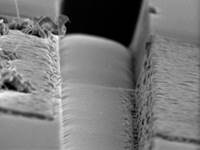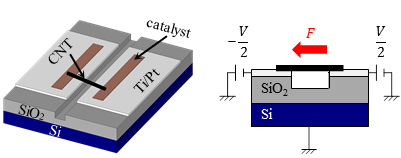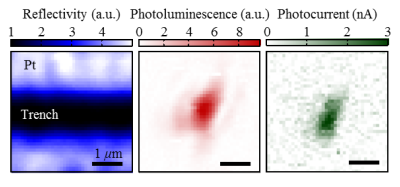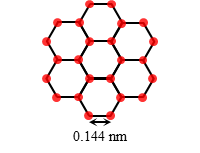Research:Spontaneous exciton dissociation in carbon nanotubes
Excitons in nanotubes are stable even at room temperature because of weak screening effects in one-dimensional system and large exciton binding energies on the order of a few hundred meV. For such excitons, strong electric fields would be required to dissociate excitons into free carriers. In contrast, photoconductivity and photovoltaic measurements of nanotubes have been useful for investigating the properties of carbon nanotubes. In this study, we have observed spontaneous exciton dissociation in nanotubes, resolving such a mystery.

We use suspended nanotube field effect transistors to apply a longitudinal electric field on individual carbon nanotubes grown by chemical vapor deposition. Using the configuration shown in the figure below, we are able to perform simultaneous measurements of photoluminescence and photocurrent on a single carbon nanotube with known chirality.

First, we look for a fully suspended nanotube by imaging measurements. The color plots below correspond to reflectivity (left), photoluminescence (middle), and photocurrent (right) images. The reflectivity image shows the position of the trench, while the photoluminescence image can be used to locate the position of the nanotube. This nanotube is located at the trench position, confirming that it is suspended. The photocurrent image shows that the signal comes from the same nanotube that shows photoluminescence.

The voltage dependence is shown in the bottom left figure. We observe photocurrents even below 1 V, and there exists some slope near zero volts. We find that excitons in nanotubes are spontaneously dissociating since there isn't a threshold field in the photocurrent. In addition, photoluminescence decreases with increasing voltage, while photocurrent increases. We expect that the number of excitons for photoluminescence decreases because photocarriers are flowing into the contacts. Since the number of carriers associated with the photocurrent can be determined, the numbers of excitons that contribute to photoluminescence and the number of photo-excited carriers can be deduced. Furthermore, because the number of carbon atoms in nanotubes can be found from the chirality and the length of the nanotubes, we are able to obtain the absorption cross section per carbon atom. We find that the value of the absorption cross section is 0.0024 nm2. This corresponds to areas indicated by red circles (bottom right).


To learn more about this work, please refer to:
Spontaneous exciton dissociation in carbon nanotubes
Phys. Rev. Lett.
112, 117401 (2014).
![]()